All issues

Successor
Volume 40, Issue 12
Displaying 1-5 of 5 articles from this issue
- |<
- <
- 1
- >
- >|
-
with Special Reference to the Isolation of Shigella Boydii 5Kunitaro OCHIAI, Shonosuke NAITO1967 Volume 40 Issue 12 Pages 439-444
Published: March 20, 1967
Released on J-STAGE: November 25, 2011
JOURNAL FREE ACCESSThe number of patients admitted to this hospital from various part of Nagoya city under the diagnosis of bacillary dysentery or its suspect or the carrier during a year 1965 was 544 in total. Those from whom eShigella were isolated were 321 (59.0%).
Through the year, February had largest number of incidence (45) and October, the least (15). The isolation rate was highest in November (82.9%), lowest in July (41.3%).
In type distribution, Sh. sonnei was predominant (181, 56.4%), followed by Sh. flexnery 3a (58, 18.1%). Other types were each. less than 10.0%
Out of isolated 321 strains, 201 (62.6%) were proved to be treble-, duple- or single-drug-resistant against such antibiotics as streptomycin (SM), chloramphenicol (CM) and tetracycline (TC). Of them, the vast majority (283, 91.0%) were treble (SM CM TC)-drug-resistant strains, others being each. less than 5.0% None of strains resistant to CM alone was encountered. Against sulfonamide (SA), 267 (83.2%) were resistant. Above mentioned treble-drug-resistant strains were all proved resistant to SA at the same time. Against kanamycin, none of 207 strains tested was resistant.
Massive outbreaks, involving more than 10 patients in one occasion, were only two (11 and 31 patients respectively). The germ isolation rate was 100% in the former, 87.1 % in the latter. The germs were all. Sh. sonnei and multiple (SM CM TC SA)-drug- resistant.
Two strains of Sh. boydii 5 were obtained in this survey, for the first time as far as Nagoya city is, concerned. One was isolated from a patient in this hospital, and another, from the material sent from theother institution. The both were sensitive either to antibiotics or to SA.
Vibrio enteritidis isolated through the year were only four. The number was remarkably lowerthan ever. All were belonging to type 1 in biological properties.View full abstractDownload PDF (712K) -
Yutaka KANAZAWA, Toshie KURAMATA, Itaru SASAGAWA, Kengo IKEMURA, [in J ...1967 Volume 40 Issue 12 Pages 445-453
Published: March 20, 1967
Released on J-STAGE: November 25, 2011
JOURNAL FREE ACCESSA Salmonella paratyphi B, isolated from a febril paratyphoid patient at the initial stage of chloramphenicol treatment, was proved to be drug sensitive and of phage type 3a. An organism was again isolated from the same patient in his convalescence. It was also Salmonella paratyphi B, but this time was proved to be resistant to such drugs as chloramphenicol, tetracycline, streptomycin, sulfonamide and aminobenzyl penicillin and have a phage type belonging to none of hitherto known lytic patterns.
It was ascertained that its drug resistance was transmissible to drug sensitive Escherichia coli by mixed culture (1st transmission), and the further transmission (2nd transmission) was also possible. Consequently, it was considered to be controlled by “resistance transfer factor (R)”.
From the results of the drug inactivation test, it was suggested that the resistance to aminobtenzyl penicillin and to chloramphenicol was attributable to the acquirement of productivities ofβ-lacatmase against penicillin and of chloramphenicol-inactivation respectively.
Furthermore, an increase in the productivity of cephalosporinase was noted in accordance with the development of the productivity of β-lactamase against penicillin.View full abstractDownload PDF (1012K) -
Masahisa SHINGU, Makoto HONDA, Takashi KUSUMOTO, Yoh NAKAGAWA1967 Volume 40 Issue 12 Pages 454-459
Published: March 20, 1967
Released on J-STAGE: November 25, 2011
JOURNAL FREE ACCESSIn recent years, hereafter 1961, epidemics of “infectious column myelitis” due to ECHO type 21 infection, a myelitis following abdominal signs have been reported with increasing frequency. In summer of 1966, one thousand four hundred three different serum samples have been collected from healthy individuals under 80 years of age in epidemic distirct (Kushiro, Muroran and Kure) and non-epidemic district (Hofu, Yamaguchi, Moji, Omura, Kurume, Miyzaki and Nichinan), and the neutralizing antibody titers of ECHO type 21 were examined.
The antibody titers of 4 or higher will be referred to as “positive” and lower as “negative”. The antibody possessing ratio of healthy individuals in epidemic district was higher than that of those in nonepidemic district.
The antibody titers of 64 or higher will be referred to as “high positive”. The high antibody possessing ratio of healthy individuals in epidemic district was higher than that in non-epidemic district. In view of these findings suggesting an etiologic role of the same agents in many separate epidemics, the Authors believe that ECHO type 21 virus has been the actual causative agent for the so-called “infectious column myelitis”.View full abstractDownload PDF (768K) -
Johji ISHIKAWA1967 Volume 40 Issue 12 Pages 460-462
Published: March 20, 1967
Released on J-STAGE: November 25, 2011
JOURNAL FREE ACCESSRecently, antibiotic resistant bacillary dysentery has increased in number in Shimizu City, causative strains of them being almost Shigella sonnei.
In the treatment of antibiotic resistant cases (168 in total; 10 manifested cases, 158 healthy carriers) almost due to Shigella sonnei, Wintomylon was found to have good effect in the single use. Daily dose of 50 mg per Kg of Wintomylon was given every 6 hours per day for 5 days successively after admission.
Reappearance rate of Shigella was 1.1 per cent in carriers and 20 per cent in previously manifested one. Side effects were seen in 13 cases (7.7%), in 7 of them, it was vision abnormality.View full abstractDownload PDF (333K) -
1967 Volume 40 Issue 12 Pages 482-485
Published: March 20, 1967
Released on J-STAGE: November 25, 2011
JOURNAL FREE ACCESSDownload PDF (467K)
- |<
- <
- 1
- >
- >|